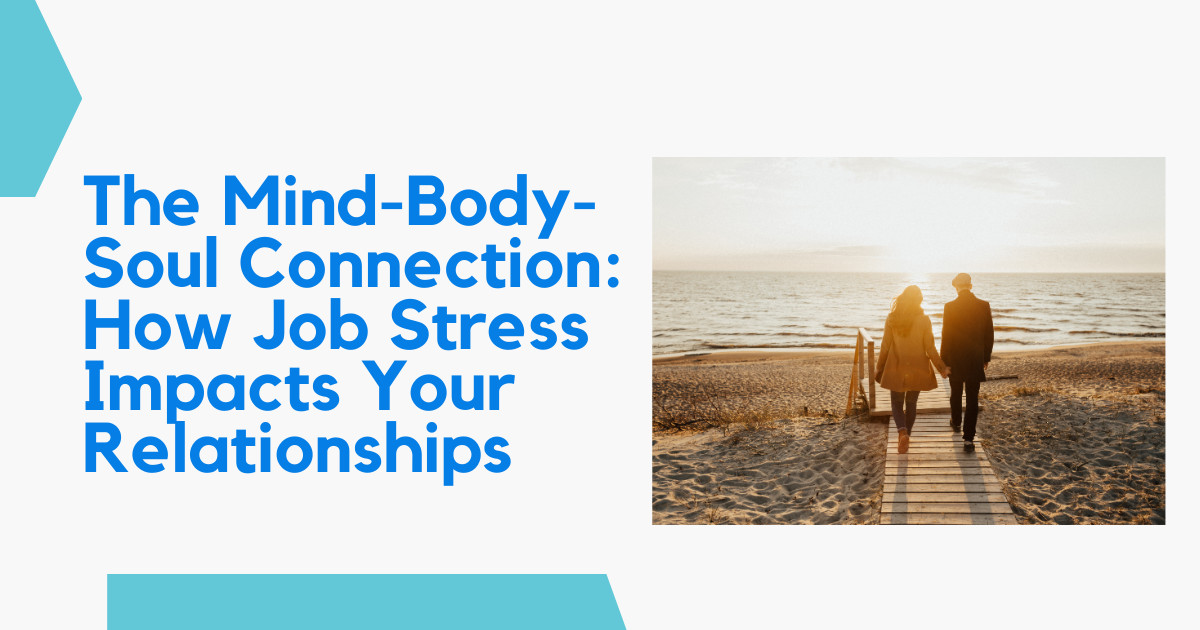
Are you an executive looking to enhance your leadership skills and achieve peak performance? Cognitive behavior therapy (CBT) techniques might just be the answer you've been searching for. In the world of executive coaching, CBT techniques are gaining recognition for their effectiveness in improving mindset, behavior, and overall success.
Understanding cognitive-behavioral therapy (CBT)
Cognitive-behavioral therapy (CBT) is a well-established therapeutic approach that focuses on the relationship between thoughts, emotions, and behaviors. It aims to identify and change negative thinking patterns and beliefs that contribute to emotional distress and unhelpful behavior. While traditionally used in a clinical setting, CBT has found its way into executive coaching as a powerful tool for personal and professional growth.
CBT operates on the premise that our thoughts influence our emotions and behaviors. By identifying and challenging distorted thinking patterns, executives can gain a better understanding of their cognitive traps and develop strategies to overcome them. This self-awareness allows them to make more informed decisions, manage stress effectively, and cultivate positive relationships with their teams.
Integrating CBT techniques into executive coaching sessions provides executives with the opportunity to explore their thoughts and beliefs in a safe and supportive environment. With the guidance of a trained coach, they can gain insights into the cognitive processes that drive their behavior and develop practical techniques to enhance their performance.
The benefits of using CBT techniques in executive coaching
The application of CBT techniques in executive coaching offers a range of benefits for professionals striving for personal and professional growth. One of the key advantages of CBT is its focus on practical, evidence-based strategies that can be easily implemented in real-world settings.
First and foremost, CBT techniques help executives identify and challenge cognitive distortions, such as all-or-nothing thinking, overgeneralization, and catastrophizing. These distorted thinking patterns can hinder decision-making, problem-solving, and overall performance. By addressing these cognitive traps, executives can enhance their ability to think critically and make rational, well-informed decisions.
Moreover, CBT techniques empower executives to develop self-awareness and emotional intelligence. Through self-reflection and self-monitoring exercises, executives can gain a deeper understanding of their emotions, triggers, and reactions. This awareness allows them to regulate their emotions effectively, manage stress, and respond to challenging situations with resilience and composure. CBT techniques provide executives with practical tools to challenge and change unhelpful beliefs and thoughts. By restructuring their cognitive framework and replacing negative thoughts with more balanced and realistic ones, executives can cultivate a mindset of optimism and confidence. This shift in thinking not only boosts their self-esteem but also enables them to approach challenges with a problem-solving mindset.
As a Flow Certified Business Coach from Flow Coaching Institute, I use the flow model that suggests Flow coaching theory is based on the concept of flow state, which is a state of optimal experience where individuals are fully immersed and focused on a task, resulting in a heightened sense of productivity and satisfaction. This theory suggests that by identifying flow-inducing activities and incorporating flow triggers into daily routines, individuals can cultivate a state of flow more consistently and achieve higher levels of performance and fulfillment. By integrating flow coaching theory and cognitive behavior coaching, individuals can benefit from both approaches. They can learn strategies to identify and create flow-inducing experiences in their lives, while also addressing any psychological barriers or negative thought patterns that may be impeding their progress. This combination can lead to a more holistic and effective coaching experience, enabling individuals to unlock their full potential and achieve their desired goals
Furthermore, CBT techniques assist executives in implementing behavioral experiments to test and reinforce new behaviors. By engaging in purposeful action and observing the outcomes, executives can gain valuable insights into the effectiveness of their behaviors. This iterative process allows them to refine their approach, develop new skills, and adapt their behaviors to achieve desired outcomes.
In summary, incorporating CBT techniques into executive coaching provides executives with valuable tools to enhance their mindset, behavior, and overall success. By challenging cognitive distortions, developing self-awareness, and adopting evidence-based strategies, executives can unlock their full potential and achieve higher levels of productivity, effectiveness, and fulfillment.
Case studies and success stories of using CBT techniques in executive coaching
The implementation of CBT techniques in executive coaching has yielded remarkable results for numerous professionals across various industries. Let's explore a few case studies and success stories that highlight the transformative power of CBT in executive coaching.
Case Study 1: Overcoming Imposter Syndrome
Sarah, a high-achieving executive in the technology sector, struggled with imposter syndrome, a persistent belief that she was not as competent as others perceived her to be. This self-doubt affected her decision-making, hindered her ability to speak up in meetings, and prevented her from pursuing leadership opportunities.
Through CBT techniques, Sarah worked with her executive coach to identify her negative thinking patterns and challenge her irrational beliefs. She learned to reframe her thoughts and recognize her accomplishments and capabilities. By engaging in self-monitoring and self-reflection exercises, Sarah gained confidence and began to embrace her role as an effective leader.
With the support of her coach, Sarah implemented behavioral experiments to test her new beliefs and behaviors. She gradually took on more challenging projects, shared her ideas in meetings, and sought feedback from her colleagues. As she received positive reinforcement and experienced success, her imposter syndrome diminished, and she thrived in her leadership role.
Case Study 2: Enhancing Decision-Making Skills
John, a senior executive in the finance industry, struggled with indecisiveness and a fear of making mistakes. This hesitancy often led to missed opportunities and delayed progress. CBT techniques offered John a framework to examine his decision-making process and identify unhelpful thinking patterns.
Through cognitive restructuring exercises, John learned to challenge his perfectionistic tendencies and embrace a more balanced approach to decision-making. His coach guided him through the process of evaluating the potential outcomes of his decisions and weighing the risks and benefits. Through repeated practice, John became more comfortable with making decisions and trusted his judgment.
With the guidance of his coach, John implemented behavioral experiments to reinforce his newfound decision-making skills. He actively sought out opportunities to make decisions, tracked the outcomes, and reflected on the lessons learned. Over time, John's confidence in his decision-making abilities grew, and he became a more decisive and effective leader.
These case studies exemplify the transformative impact of incorporating CBT techniques into executive coaching. By addressing cognitive distortions, developing self-awareness, and implementing evidence-based strategies, executives can overcome challenges, enhance their leadership capabilities, and achieve extraordinary results.
The principles and key techniques of CBT
To effectively integrate CBT techniques into executive coaching, it is essential to understand the underlying principles and key techniques that drive this therapeutic approach. Let's explore some of the fundamental principles and techniques of CBT.
Principle 1: Cognitive Restructuring
Cognitive restructuring is a core principle of CBT that involves identifying and challenging cognitive distortions and replacing them with more realistic and balanced thoughts. By reframing negative thoughts and beliefs, executives can develop a more constructive and empowering mindset.
Executives can challenge cognitive distortions by examining the evidence supporting their negative thoughts, considering alternative explanations, and evaluating the potential consequences of their beliefs. Through repeated practice, they can gradually replace unhelpful thoughts with more accurate and positive ones.
Principle 2: Self-Monitoring and Self-Reflection
Self-monitoring and self-reflection are critical techniques that enable executives to gain insights into their thoughts, emotions, and behaviors. By keeping a journal or engaging in regular self-reflection exercises, executives can observe patterns, triggers, and reactions.
This heightened self-awareness allows executives to identify cognitive distortions and unhelpful thinking patterns. They can then apply cognitive restructuring techniques to challenge and replace these thoughts with more adaptive ones.
Principle 3: Behavioral Experiments
Behavioral experiments are practical exercises that executives can engage in to test and reinforce new behaviors. By intentionally acting in ways that align with their new beliefs and thoughts, executives can gather evidence of the effectiveness of these behaviors.
Through behavioral experiments, executives can observe the outcomes of their actions and make informed adjustments. This iterative process helps them refine their skills, build confidence, and reinforce positive behaviors that contribute to their success as leaders.
By understanding and utilizing these principles and techniques, executive coaches can guide their clients effectively through the process of cognitive-behavioral transformation.
How to integrate CBT techniques into executive coaching sessions
Integrating CBT techniques into executive coaching sessions requires a structured and systematic approach that aligns with the unique needs and goals of each client. Here are some steps to effectively incorporate CBT techniques into executive coaching:
Step 1: Assessing and identifying cognitive distortions and negative thinking patterns
Begin by helping executives identify their cognitive distortions and negative thinking patterns. This can be done through self-report questionnaires, in-depth discussions, and self-reflection exercises. By understanding their cognitive traps, executives can start challenging and replacing these unhelpful thoughts.
Step 2: Teaching clients self-monitoring and self-reflection techniques
Guide executives in developing self-monitoring and self-reflection practices. Encourage them to keep a journal, record their thoughts and emotions, and reflect on their experiences. This process enables executives to gain insights into their cognitive processes, emotional triggers, and behavioral reactions.
Step 3: Using cognitive restructuring to challenge and change unhelpful beliefs and thoughts
Help executives apply cognitive restructuring techniques to challenge their negative beliefs and thoughts. Encourage them to examine the evidence supporting their beliefs, consider alternative explanations, and evaluate the potential consequences of their thoughts. Assist them in developing more balanced and empowering perspectives.
Step 4: Implementing behavioral experiments to test and reinforce new behaviors
Guide executives in designing and implementing behavioral experiments to test and reinforce their new beliefs and behaviors. Encourage them to intentionally act in ways that align with their revised thoughts and beliefs. By observing the outcomes of their actions, executives can make informed adjustments and reinforce positive behaviors.
Step 5: Providing ongoing support and accountability
Throughout the coaching journey, provide ongoing support and accountability to executives. Regularly review their progress, celebrate their achievements, and address any challenges or setbacks they may encounter. This support system ensures that executives stay motivated and committed to their cognitive-behavioral transformation.
By following these steps and adapting them to each client's unique circumstances, executive coaches can effectively integrate CBT techniques into their coaching sessions and facilitate meaningful and lasting change.
Conclusion: The power of CBT techniques in transforming executive coaching outcomes
Incorporating cognitive-behavioral therapy techniques into executive coaching has the potential to revolutionize the way high-level professionals approach their personal and professional growth. By addressing cognitive distortions, developing self-awareness, and implementing evidence-based strategies, executives can unlock their full potential, achieve higher levels of productivity, and build stronger relationships.
As an executive, embracing CBT techniques can empower you to overcome limiting beliefs, enhance your leadership capabilities, and achieve peak performance. By working with a skilled executive coach who incorporates CBT techniques into their coaching approach, you can transform your mindset, overcome challenges, and unleash your true leadership potential.
Remember, the power to achieve greatness lies within you. With CBT techniques and the guidance of Nimir Raval, a skilled executive coach, you can unlock your true potential and become the exceptional leader you aspire to be.
👉 To secure your spot, simply click the "Connect" button or send a direct message to Nimir Raval, MSW, RSW Certified Coach. Let's embark on this transformational journey together! 🚀























0 Comments